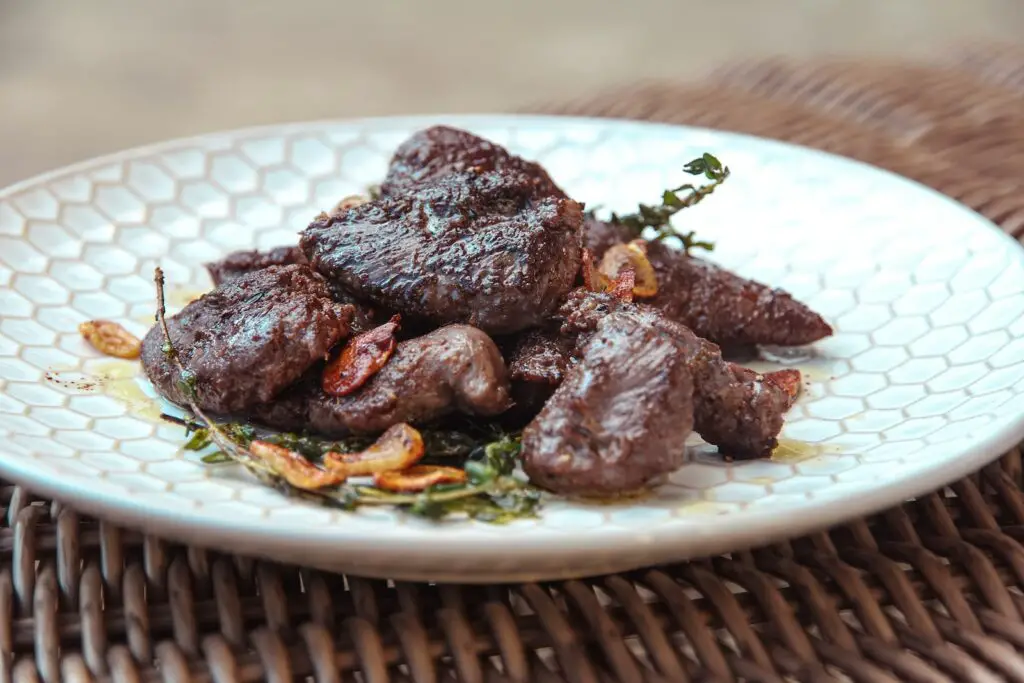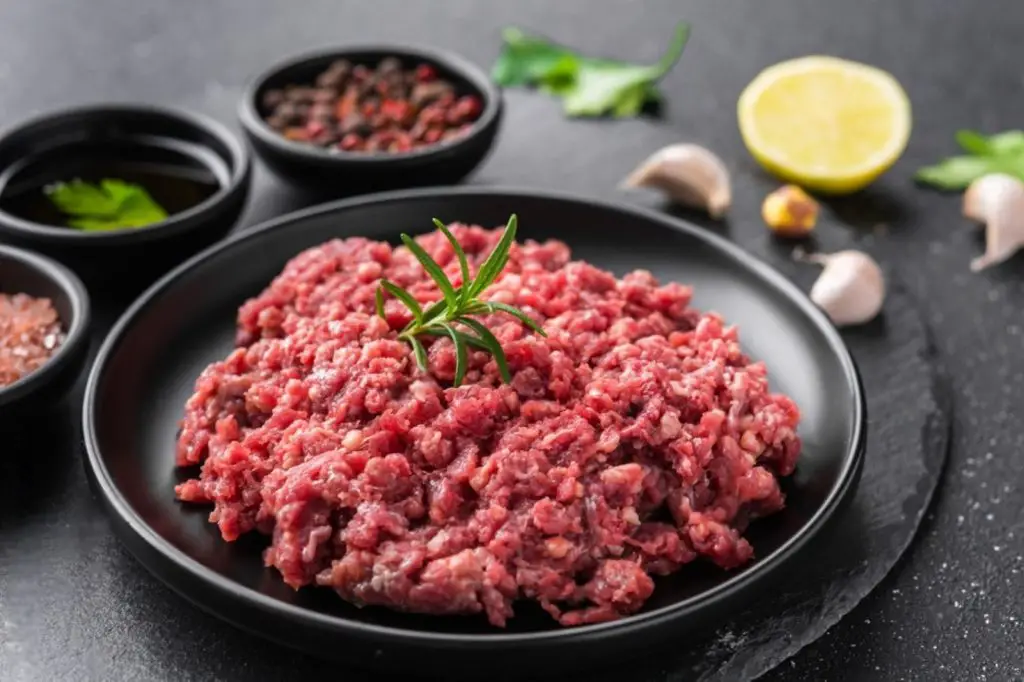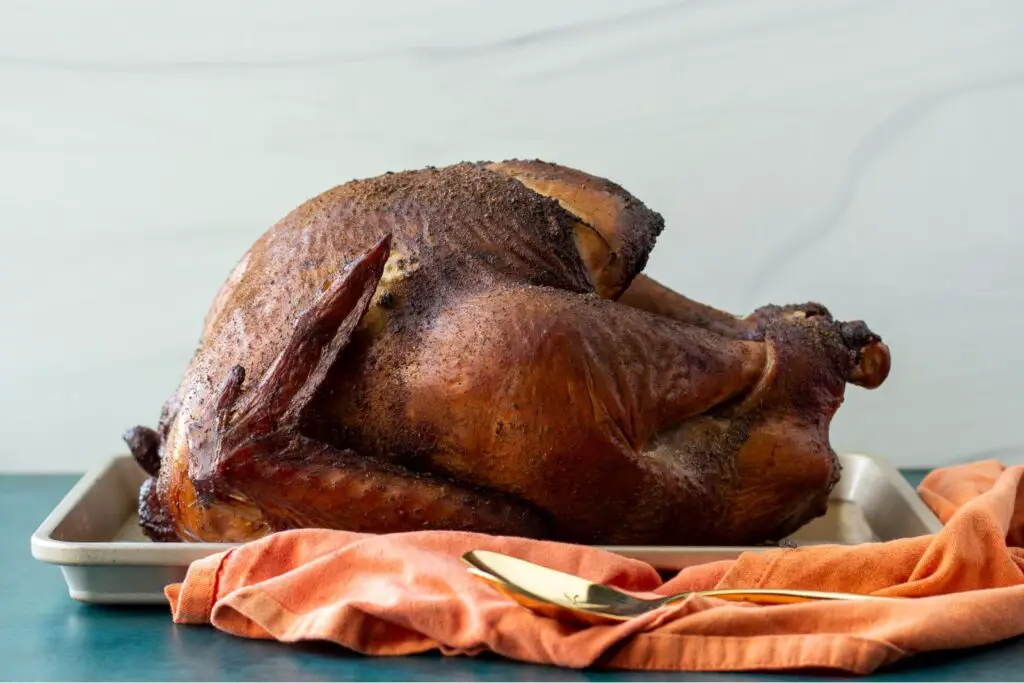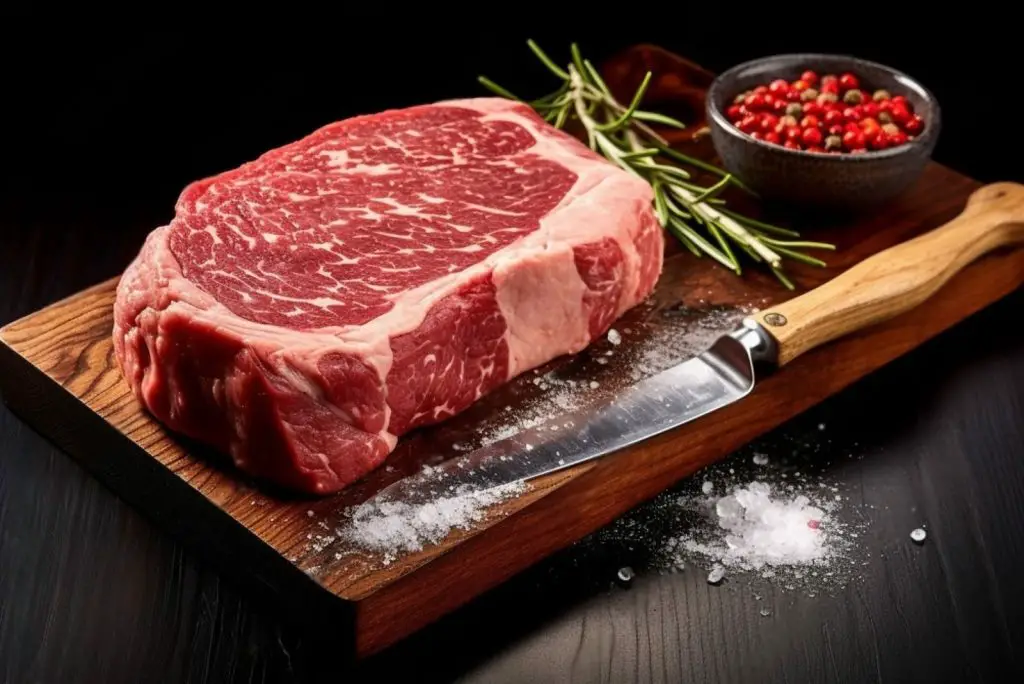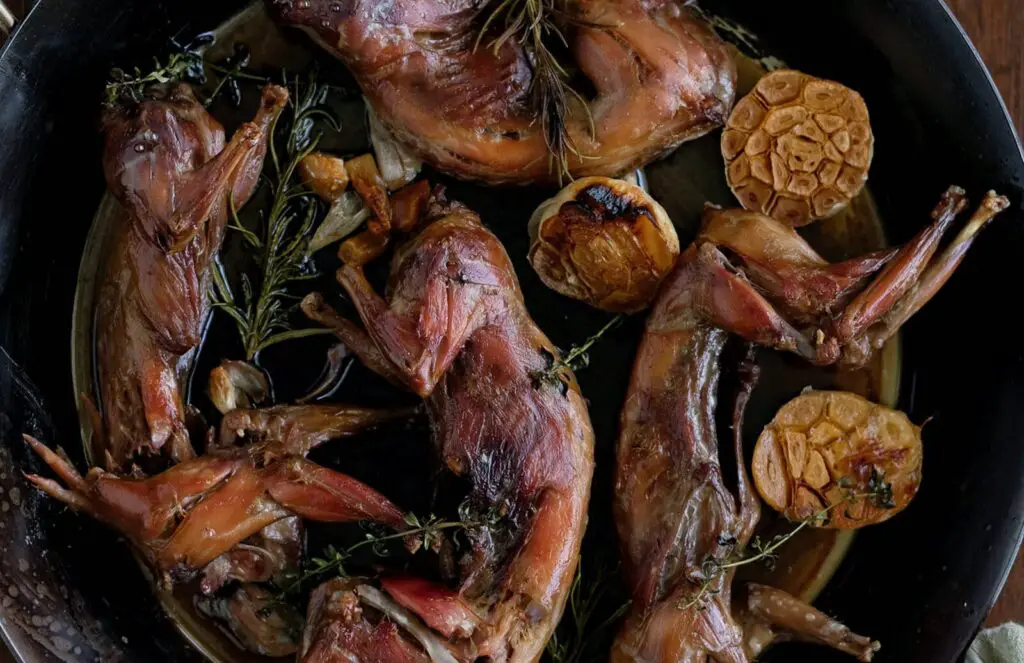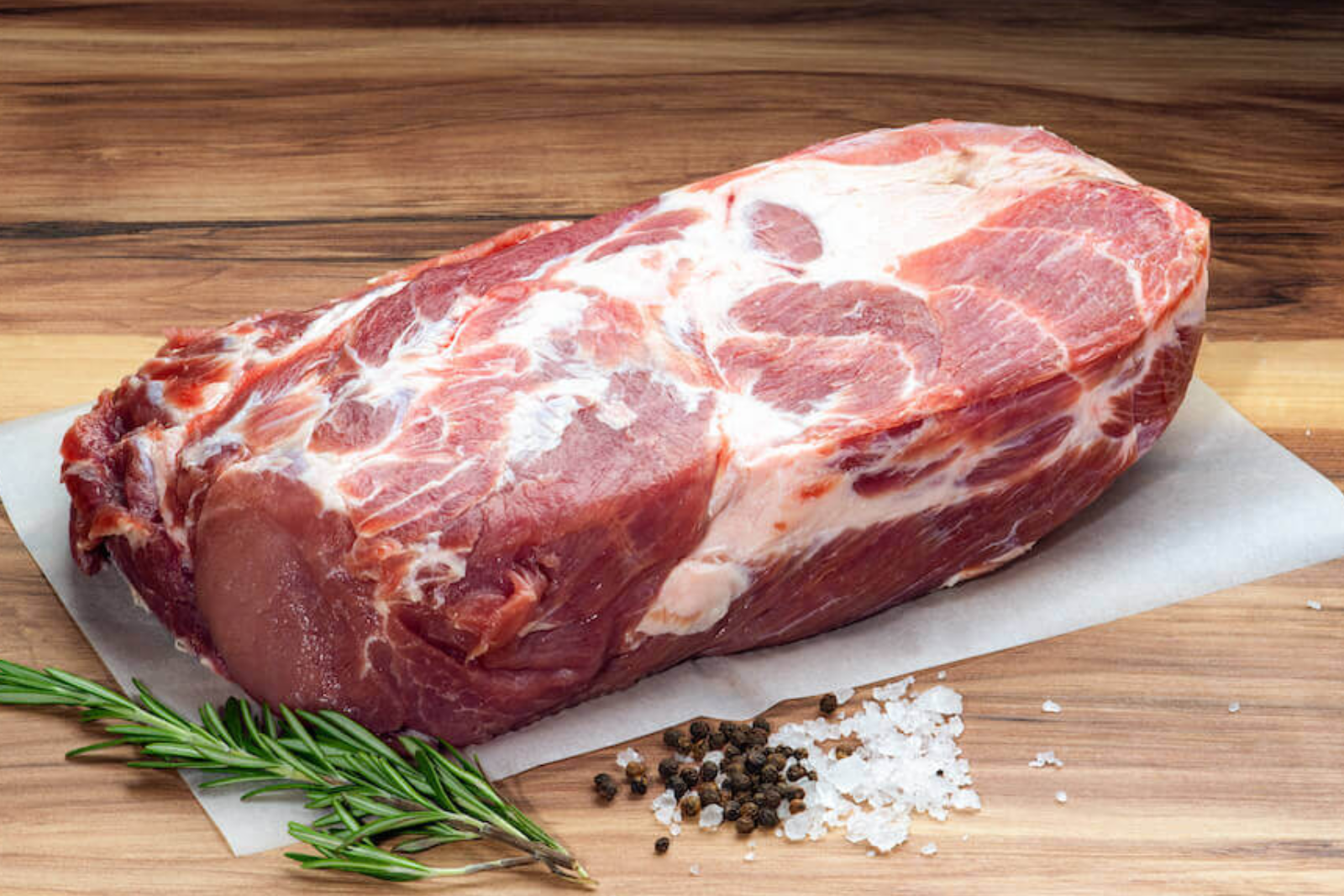
Pork shoulder is a flavorful and versatile cut of meat that is commonly used in various dishes, such as pulled pork and braised pork. Freezing pork shoulder can be a convenient way to extend its shelf life and ensure that you always have it on hand for your favorite recipes. By following a few simple steps, you can freeze pork shoulder properly and maintain its quality and taste. This article provides a comprehensive guide on freezing pork shoulder, allowing you to enjoy this delicious meat whenever you desire.
Here’s a guide on how to freeze pork shoulder:
Step 1: Select fresh pork shoulder
When freezing pork shoulder, it is crucial to start with a fresh and high-quality cut of meat. Choosing the right pork shoulder will have a significant impact on the taste and texture of the final product after freezing. Here’s why:
- Well-marbled meat: Look for pork shoulder that is well-marbled with fat. Marbling refers to the thin streaks of fat that are distributed throughout the muscle fibers. This fat adds flavor, moisture, and tenderness to the meat. When the pork shoulder is frozen, the fat helps to keep the meat juicy and prevents it from drying out during the freezing and thawing process.
- Vibrant color: Fresh pork shoulder should have a vibrant and consistent color. It should be pinkish-red or reddish-brown, depending on the type of pork and the diet of the animal. Avoid pork shoulder with any discoloration or grayish patches, as this may indicate spoilage.
- Firmness: When you touch the pork shoulder, it should feel firm and resilient. Avoid meat that feels excessively soft or mushy, as this can be a sign of poor quality or improper handling. Firm meat indicates that the pork shoulder is fresh and has been properly stored.
- Odor: Fresh pork shoulder should not have any strong or off-putting odors. It may have a mild, pleasant smell, but it should not have a sour, ammonia-like, or rotten smell. Unpleasant odors can indicate spoilage or bacterial growth, which can affect the taste and safety of the meat.
Step 2: Prepare the pork shoulder
After selecting a fresh pork shoulder, it’s essential to properly prepare it before freezing. This involves trimming excess fat or connective tissue and potentially portioning the meat into smaller pieces. Here’s why these steps are important:
- Trimming excess fat and connective tissue: Pork shoulder often contains a layer of fat on the surface, and it may also have connective tissue running through the meat. While fat adds flavor and moisture, excessive amounts can lead to greasy or oily textures when the meat is frozen and thawed. Trimming off any excessive fat helps prevent this issue and ensures a better eating experience when the pork shoulder is eventually cooked.
- Improving texture and tenderness: Connective tissue, such as silver skin or gristle, can be tough and chewy when cooked. By removing these tougher parts before freezing, you can enhance the overall tenderness and texture of the meat. This is especially important if you plan to use the frozen pork shoulder for dishes that require longer cooking times, like slow-cooked or braised recipes.
- Portioning for convenience: Depending on your needs and preferences, you may find it helpful to portion the pork shoulder into smaller pieces before freezing. This allows you to defrost only what you need for a particular recipe without thawing the entire pork shoulder. Smaller portions also facilitate faster and more even thawing, reducing the risk of bacterial growth during the process.
Should I remove the bone from the pork shoulder before freezing?
Removing the bone from the pork shoulder is a personal preference. Freezing pork shoulder with or without the bone is possible. However, keep in mind that bone-in cuts may take slightly longer to thaw and cook compared to boneless cuts.
Step 3: Wrap and protect the pork shoulder
Properly wrapping and protecting the pork shoulder is crucial for maintaining its quality during the freezing process. By taking steps to prevent freezer burn and protect the meat from exposure to air, you ensure that the frozen pork shoulder retains its flavor, texture, and overall quality. Here’s why this step is important:
- Preventing freezer burn: Freezer burn occurs when food is exposed to air and moisture within the freezer, leading to dehydration and the development of unpleasant flavors. Wrapping the pork shoulder tightly in plastic wrap or aluminum foil creates a barrier that helps prevent air and moisture from reaching the meat’s surface. This significantly reduces the risk of freezer burn, preserving the taste and texture of the pork shoulder.
- Minimizing oxidation: When food is exposed to air, it can undergo oxidation, resulting in changes in flavor, color, and texture. By wrapping the pork shoulder tightly, you minimize its exposure to oxygen, helping to maintain its freshness and preventing undesirable changes during freezing.
- Using a freezer-safe bag: An alternative to using plastic wrap or aluminum foil is placing the pork shoulder in a freezer-safe bag. These bags are specifically designed to prevent air and moisture from entering while keeping the food well-sealed. When using a bag, it’s important to remove as much air as possible before sealing it. Air trapped inside the bag can contribute to freezer burn and affect the quality of the pork shoulder.
Should I remove the pork shoulder from its original packaging before freezing?
If the pork shoulder is purchased in a vacuum-sealed or tightly wrapped package, it is generally not necessary to remove it from the original packaging before freezing. The original packaging provides an additional layer of protection against freezer burn. However, if the packaging is damaged or not freezer-safe, it is recommended to re-wrap the pork shoulder in appropriate freezer-safe materials.
Can I freeze pork shoulder in a container?
Yes, you can freeze pork shoulder in a container. It is important to use freezer-safe containers that are specifically designed to withstand the freezing temperatures without cracking or breaking. Ensure the container has an airtight seal to prevent freezer burn and place the pork shoulder in the container, leaving some headspace for expansion during freezing.
Step 4: Label and date the package
Properly labeling and dating the package containing the frozen pork shoulder is an essential step in freezer organization and food safety. By clearly identifying the contents and noting the date of freezing, you can keep track of how long the pork shoulder has been in the freezer and ensure that it is used within a reasonable timeframe. Here’s why this step is important:
- Organization and convenience: Labeling the package with the contents (pork shoulder) makes it easier to identify what’s inside without having to unwrap or guess. This saves time and eliminates confusion when searching for specific items in the freezer. It also helps you plan your meals better by knowing exactly what you have available.
- Rotation and freshness: By dating the package with the freezing date, you create a system for proper rotation of frozen foods. This allows you to use the oldest items first and ensures that the pork shoulder is consumed within a reasonable timeframe. By adhering to the recommended time frame, you can enjoy the best flavor and texture from the meat. Remember to use a permanent marker or a label that won’t smudge or fade over time.
- Food safety: Properly labeling and dating the package contributes to food safety practices. It helps you avoid consuming pork shoulder that has been frozen for too long, as extended freezing can affect the quality and safety of the meat. Additionally, having clear labels reduces the chances of mistaking the pork shoulder for another frozen item or forgetting what it is altogether.
Step 5: Store in the freezer
Proper storage of the wrapped or packaged pork shoulder in the freezer is crucial for maintaining its quality and safety over an extended period. By placing it in the coldest part of the freezer and ensuring efficient airflow, you create an optimal environment for preserving the frozen pork shoulder. Here’s why this step is important:
- Temperature control: The ideal temperature for freezing pork shoulder is 0°F (-18°C) or below. At this temperature, the meat remains solidly frozen, preventing the growth of harmful bacteria and maintaining its quality. It’s essential to use a freezer thermometer to monitor and confirm that your freezer is set at the appropriate temperature. Keeping the pork shoulder at a consistently low temperature preserves its flavor, texture, and overall integrity.
- Coldspot placement: The coldest part of the freezer is typically at the back or bottom of the freezer compartment. It’s important to place the wrapped or packaged pork shoulder in this area to ensure it is exposed to the lowest temperatures. Avoid storing the meat near the freezer door or in areas that are subject to temperature fluctuations, as this can compromise its quality and increase the risk of thawing.
- Airflow and organization: Arrange the packages of pork shoulder in a way that allows for efficient airflow within the freezer. Proper airflow helps maintain consistent temperatures and prevents any areas from becoming excessively cold or warm. Additionally, organize the freezer in a manner that allows easy access to the pork shoulder without disturbing or damaging other frozen items. This helps prevent unnecessary thawing and refreezing of the meat.
How long can I keep frozen pork shoulder in the freezer?
Frozen pork shoulder can be stored in the freezer for up to 6 months without a significant loss in quality. However, for the best flavor and texture, it is recommended to use it within 3 to 4 months.
Step 6: Thaw and use frozen pork shoulder
Thawing the frozen pork shoulder properly is crucial to preserve its texture, flavor, and ensure food safety. There are different methods to thaw the pork shoulder, but it’s important to choose the one that maintains the meat’s quality. Here are the recommended thawing methods:
- Refrigerator thawing: The best and safest method for thawing pork shoulder is to transfer it from the freezer to the refrigerator. Place the wrapped or packaged pork shoulder on a plate or tray to catch any potential drips and let it thaw slowly overnight. This gradual thawing process allows the meat to retain its moisture and texture while minimizing the risk of bacterial growth. It’s important to note that larger pork shoulder portions may require more time to thaw completely.
- Microwave thawing: If you need to thaw the pork shoulder more quickly, you can use the defrost setting on your microwave. Follow the manufacturer’s instructions for defrosting meat, as microwave settings and times can vary. Be cautious not to overcook the pork shoulder during the defrosting process, as this can result in uneven cooking and loss of moisture.
- Cold water thawing: Another option for quicker thawing is to place the sealed pork shoulder in a leak-proof plastic bag and submerge it in cold water. Make sure to use cold water, as warm or hot water can encourage bacterial growth. Change the water every 30 minutes to keep it cold and allow for more efficient thawing. This method requires more attention and monitoring compared to refrigerator thawing, as the water needs to remain cold throughout the process.
It’s important to avoid thawing the pork shoulder at room temperature, as this can lead to uneven thawing and an increased risk of bacterial growth. Never thaw meat on the countertop, as the exterior may thaw and reach unsafe temperatures before the interior is fully thawed.
Other related questions
Can I refreeze pork shoulder?
Refreezing pork shoulder is generally not recommended as it can affect the quality and safety of the meat. When pork shoulder is thawed, its moisture and structure may change, leading to potential texture issues upon refreezing. Moreover, each thawing and refreezing cycle increases the risk of bacterial growth, compromising food safety. It is advisable to plan portion sizes and only thaw the amount needed for immediate use to minimize the need for refreezing.
How do I know if the pork shoulder has gone bad after being frozen?
After being frozen, you can determine if a pork shoulder has gone bad by inspecting its appearance, smell, and texture. Look for any signs of discoloration, such as gray or green patches, which may indicate spoilage. Additionally, a sour or unpleasant odor and a slimy or sticky texture are indications that the pork shoulder has gone bad. When in doubt, it is best to discard the meat to avoid the risk of foodborne illnesses.
Can I freeze cooked pork shoulder?
Yes, you can freeze cooked pork shoulder. However, keep in mind that the texture and flavor may slightly change upon thawing and reheating. It is best to cool the cooked pork shoulder completely before wrapping and freezing it to maintain its quality.
Can I freeze pork shoulder with marinade or seasoning?
Yes, you can freeze pork shoulder with marinade or seasoning. In fact, marinating the pork shoulder before freezing can enhance its flavor. Make sure the pork shoulder is well-coated with the marinade or seasoning, and securely wrap it to prevent any leaks or cross-contamination with other foods in the freezer.
What are some recommended recipes for using frozen pork shoulder?
Frozen pork shoulder can be used in various recipes, such as pulled pork, braised dishes, stews, and soups. Slow-cooking methods are particularly suitable for frozen pork shoulder as they help tenderize the meat. Consider recipes like slow cooker pulled pork, pork shoulder roast, or hearty pork chili for delicious meals using your frozen pork shoulder.

